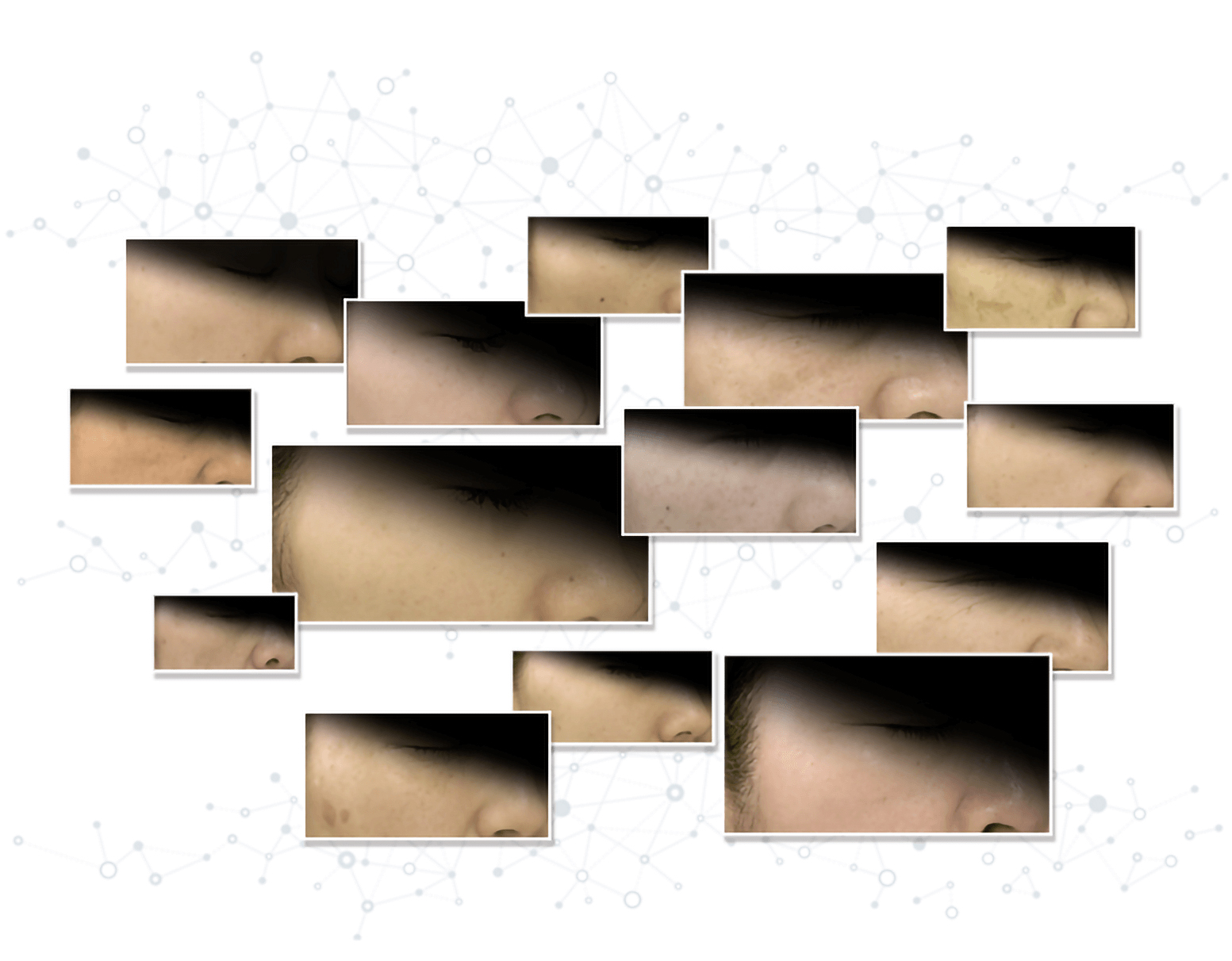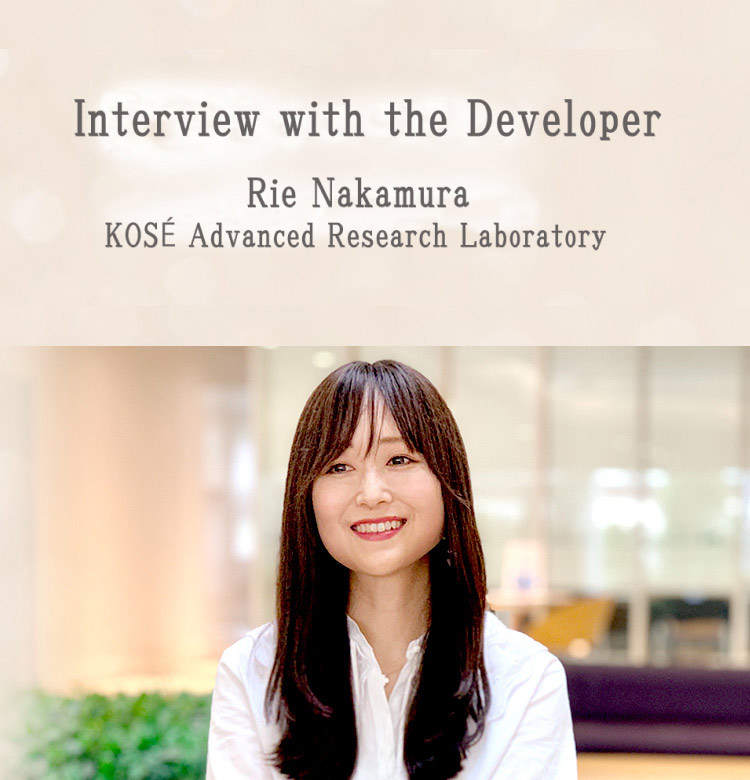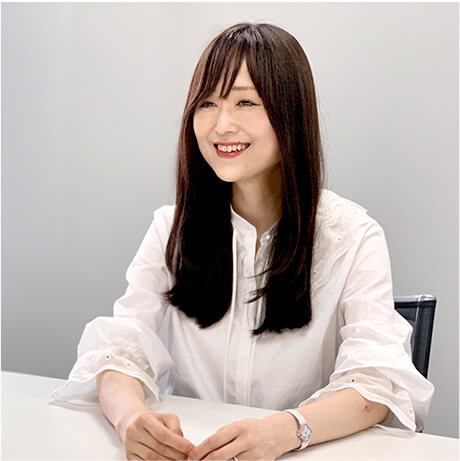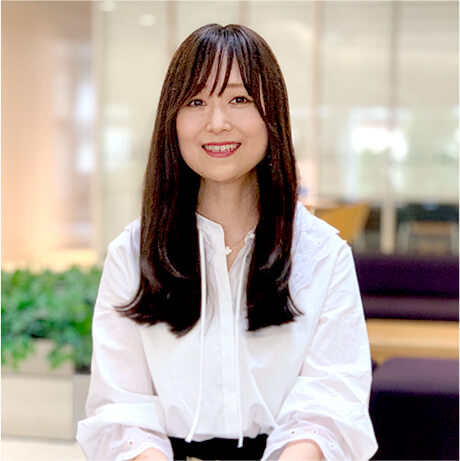Wrinkle Prediction
The World's First Prediction Model for Visualizing Future Wrinkles
KOSÉ laboratories have developed a model that accurately predicts future wrinkles based on one's current skin condition.
This model can derive what one's skin wrinkle grade will be in five years and provide suggestions for wrinkle care methods.
A test subject with a skin wrinkle grade of 5.0 at age 49 showed a wrinkle grade of 5.5 at age 55. Applying our prediction model to the subject's data at age 49, the predicted wrinkle value at age 55 was 5.6.

Accurate prediction of future wrinkles based on your current skin condition
Background to the Development
KOSÉ laboratories have collected skin data from 48 test subjects annually since 2009 and use that data in our skin research.
We worked in collaboration with Dr. Hisashi Noma, a medical statistics specialist, to develop a method based on this long-term dermatological data that numerically visualizes and evaluates the risk for future wrinkle progression.
The result is our formula for predicting future wrinkles.
An incredible 8,192 combination of factors were explored to predict future wrinkles.
Of these, our formula derives the most accurate prediction based on the individual's skin condition.
A Treasure Trove of Long-term Dermatological Data
KOSÉ laboratories have measured the wrinkles and skin condition of the same group of women since 2009.

-
A Treasure Trove of Long-term Dermatological Data

-
Applying the Medical Statistics Concept of Disease Prediction

Dr. Hisashi Noma
The Institute of Statistical MathematicsJoint research with
Japan's leading medical statisticianHisashi Noma, M.P.H., Ph.D.
Professor, Department of Data Science, The Institute of Statistical
Mathematics (as of October 2021)
Research Organization of Information and Systems (ROIS), Inter-University Research Institute Corporation
Building a prediction model that considers the influence of individual differences
Developing a method to numerically visualize and
evaluate the risk for future wrinkle progression based on
an individual's current skin condition

The Formula for Predicting Future Wrinkles
Applying the Medical Statistics Concept of Disease Prediction

From a vast amount of skin condition data, we searched for factors that affect an individual's wrinkle grade.
8,192 pattern combinations
were explored to identify the most accurate predictors for wrinkle development.
Our formula for predicting future wrinkles was born when we discovered that wrinkle grades can be described by the factors of age, skin brightness, skin redness and sebum levels.


-
Q1. Please tell us where the idea for developing the formula came from.
It started with the idea that we want to accompany our customers on their future beauty journey, with both sides looking toward the same goal. In medicine, the risk of developing a lifestyle disease is predicted from things like health checkup results, and the doctor and patient work together to improve lifestyle habits and formulate a medication plan based on the predicted results. So, I started to think that this teamwork idea could be applied to wrinkle prevention.
-
Q2. What was the most difficult aspect of developing the formula?

Building an accurate prediction model while taking into account the use of the same person's data over time. The data came from 48 different subjects over a seven-year period, but the data obtained from a subject in that period was similar. If we ignore this fact in developing the model, the accuracy would drop. Even so, we had to consider individual differences among the 48 subjects, so it was difficult to appropriately handle the data for one subject and the individual differences between the subjects.
-
Q3. What were you able to realize with the formula?

The predictive model takes the customer's skin condition and age into account, providing hints on both current needed wrinkle care and when to review wrinkle care methods in the future based on KOSÉ's wrinkle prevention research. By optimizing wrinkle care for customers who have been taking care of their wrinkles just according to their age or with some vague general approach, they should be able to not only address their current skin worries but can also expect to eliminate future skin worries. I believe that such “healthcare-inspired cosmetic recommendations” based on preventive evidence --like this wrinkle prediction model --will gain traction.
-
Q4. Finally, what are your thoughts as the developer?
We are still continuing R&D for this wrinkle prevention model. The results this time were focused on wrinkles at the corner of the eyes, but there are other types of wrinkles that still need to be addressed. We also know that predictive model R&D can be useful for other kinds of skin problems. Through my research in data analysis, I would like to continue contributing in even the smallest way to the future of customers seeking cosmetics.